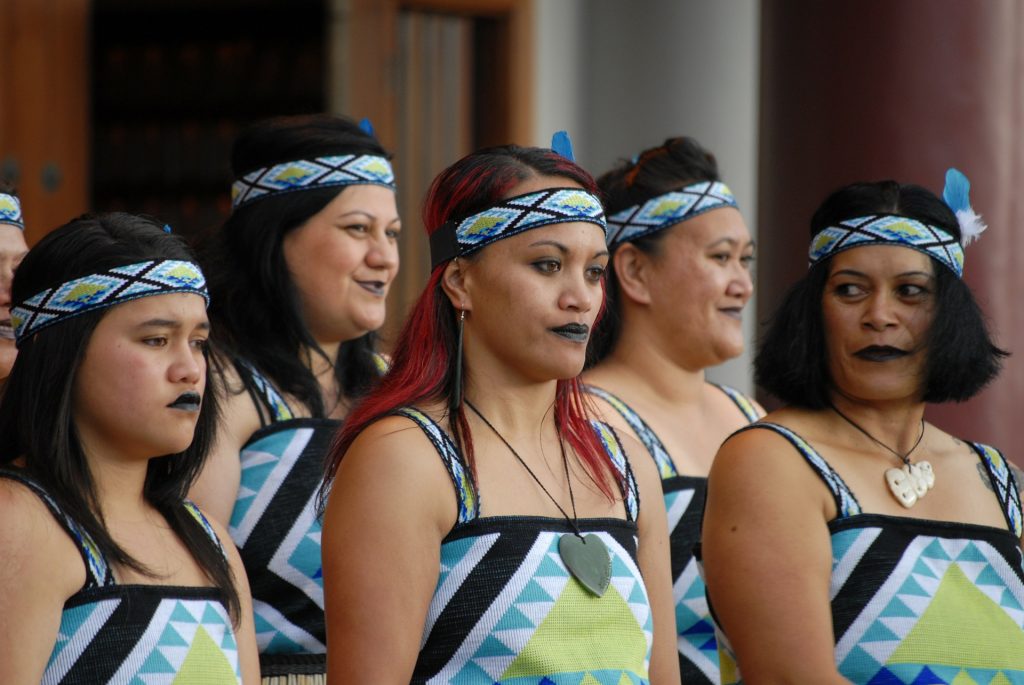There is a story in Maori folklore that tells of a great love that had been planted by the ancestors, Hinemoa and Tutanekai, on the Island of Mokoia. Their endless, amazing love is accepted as one of the greatest love stories ever told, and the tale is passed down from one generation to the next.
Today, this love is evidenced in their traditional weddings, which they are performed with a blessing from a priest (Maori Tohunga) and their sacred ancestry Takitimu Canoe.
It is interesting to note that before they were colonised, the Maori people did not have a marriage ceremony for low-ranking tribe members. However, hapū (clan) and whānau (extended family) were required to approve unions. Maori marriage became legally recognised in 1909.
Despite its history, Maori weddings have quite a few traditions. Here are some of them:
The Welcome Call (Te Karanga)
Just before the couple enters the Maori Village or the wedding location, a traditional welcome call echoes across the courtyard. Its purpose is to invite the bride and groom onto the sacred land.
There are only a few locations where Maori weddings are allowed to take place, traditionally. Included in the list of locations is Mokoia Island, Tamaki Village, Pohutu Geyser, Aorangi Peak, Four Canoes, and Fairy Springs, according to Weddings Guide.
Song and Dance (Te Powhiri)
Once they enter the location, a local tribe will perform a traditional song and dance for the bridal party.
https://www.instagram.com/p/B3y5t14pc3a/
This is followed by a practice called the Hongi, or the touching of the nose. It is a gesture that indicates goodwill and friendship between parties, according to Maori Weddings.
https://www.instagram.com/p/zVp-CQiaEr/
Wedding ceremony and Vows (Te Marena)
There are two different ways the ceremony and vows are reported to take place.
In the first instance, the priest commences the ceremony and the couple exchange vows, after which they are serenaded with a love song called “Pokarekare ana”.
In the second instance, the ceremony (called the Korowai Ceremony) is performed, and it is followed by a romantic gesture in which the husband places a Korowai (cloak of love) around his new wife. This is said to symbolise how his love will surround her for the rest of their lives.
Priest Blessing (Te Manaakitanga)
Thereafter, a priest blesses the couple, and people give Toanga (gifts) to the couple. Finally, the ceremony is closed with Hongi.
According to Weddings Guide, the Maori people believe that when God created humans, he breathed life into their nostrils. When Maori couples perform Hongi they unite their breaths of life as one.
Departure (Te Haere Atu)
The bridal party are sent off with a traditional song and dance.
Feast and Celebrations (Te Hakari)
In celebration of the special day, they organise a night of food and entertainment. They have a Hangi feast (a traditional Māori meal is essentially a feast cooked in an earth oven for several hours) and the Maori tribe honours the bride and groom. Festivities continue until late into the night.
Read the story of Hinemoa and Tutanekai here.
Image: Pixabay

